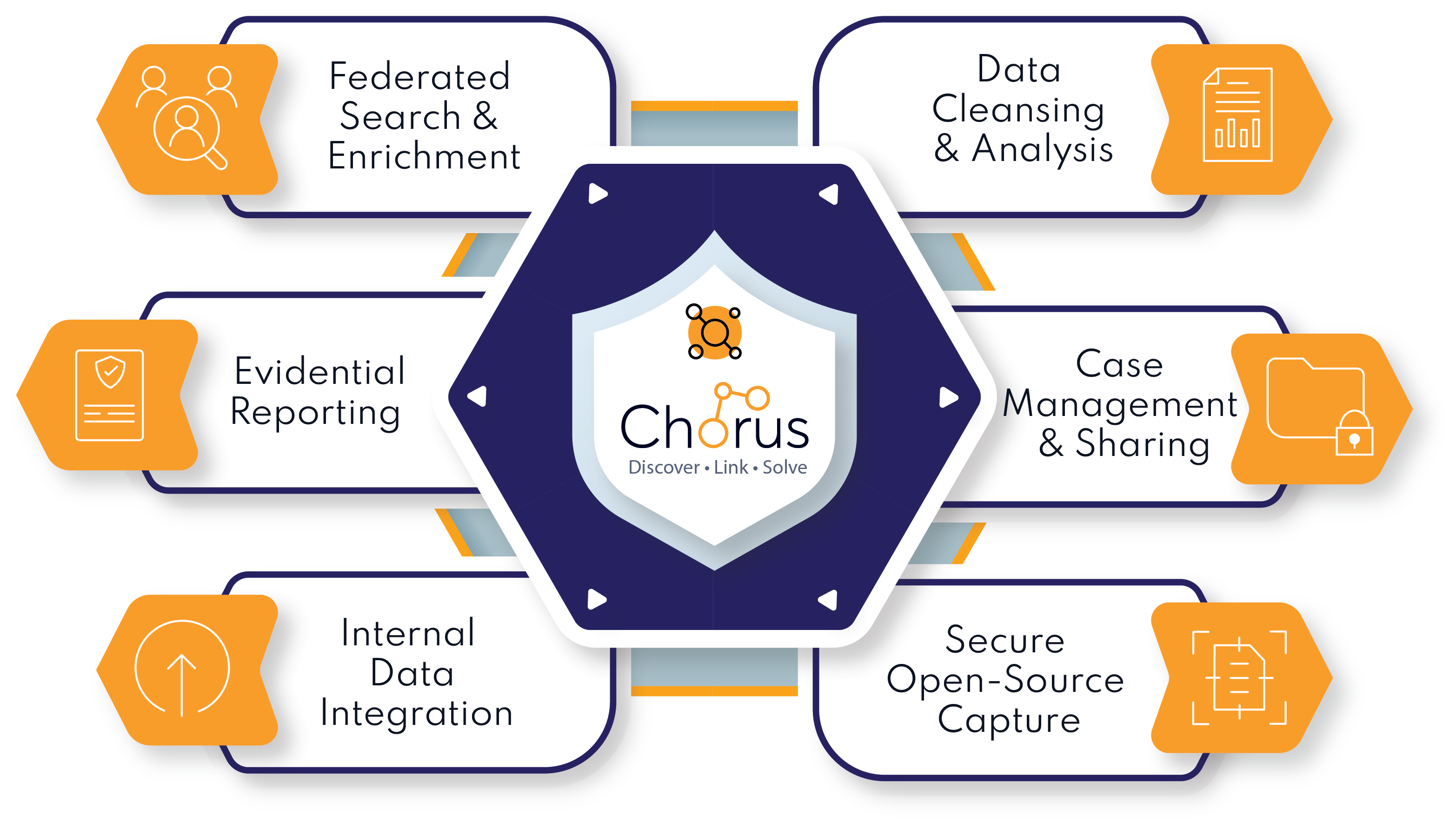A partnership approach
NWP began its Chorus journey in 2017 with the roll out of Chorus Analyse, the industry’s leading data cleansing engine. The software was used by all Analysts to cleanse, format, map and report on communications data, such as Call Data Records (CDRs), handset downloads and Automatic Number Plate Recognition (ANPR). Proven to save 97% of time, the software quickly proved its worth in supporting Analysts to accelerate their investigations.
Following the success of Chorus Analyse, NWP’s Serious and Organised Crime (SOC) team and Criminal Investigation Department (CID) adopted Chorus Investigate, a self-serve data analysis tool that helps Investigators to quickly get answers from data.
Whilst the benefits of both solutions were significant, NWP was still experiencing investigative challenges across several areas. These included:
- Collection, interrogation, and attribution of data
- Evidential storage
- Disclosure and sharing of data and evidence
Chorus held extensive feedback sessions with its users UK-wide and found these challenges to ring true for many other forces also. In addition, a rapidly evolving issue was uncovered. Historically, all communications data analysis was completed by analysts within a police force. However, with data volumes increasing and the digital landscape changing, analysts were struggling to cope with the demands put on them.
With the requirements documented, Chorus tasked its software developers up with building a solution, and it was here that the idea of the Chorus Intelligence Suite (CIS) was born.
A demonstration of the software was provided to NWP in 2020 and, as one of the UK’s most forward-thinking police forces, it agreed to trial the CIS as a Proof-of-Concept (POC) across the force.
























